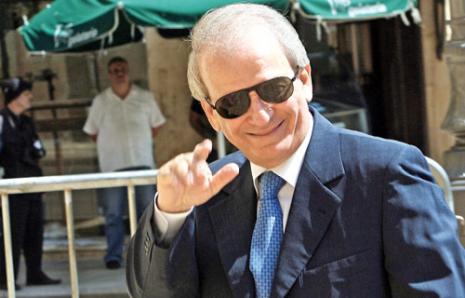WikiLeaks new scandals: everything about March 14 war against the Resistance Telecoms network
Hezbollah telephone network was the main topic of US leaked cables published on Tuesday by Lebanese daily Al-Akhbar, which showed once again how the so-called March 14 forces sought to target the Resistance.
DEFENSE MINISTRY DID NOT FULL ITS DUTIES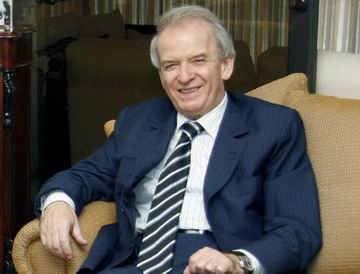 The Resistance network was first mentioned in August 2007, eight months ahead of the famous cabinet resolution against the network. In this context, a cable, dated August 24, 2007, spoke of a ministerial committee formed by the Lebanese government to investigate Hezbollah Telecommunications’ network in the south and Beirut’s southern suburb.
The Resistance network was first mentioned in August 2007, eight months ahead of the famous cabinet resolution against the network. In this context, a cable, dated August 24, 2007, spoke of a ministerial committee formed by the Lebanese government to investigate Hezbollah Telecommunications’ network in the south and Beirut’s southern suburb.
Then Telecommunications Minister Marwan Hamade told his American hosts that his ministry as well as the Interior Ministry completed their reports about the network. However, he noted with surprise that the Ministry of Defense did not "fulfill its duties."
According to Hamade’s report, Israel Israel totally destroyed the earlier Hezbollah telephone system in the south in the July 2006 war, and Hezbollah replaced it with an underground system. Hamade said that those who provided his ministry with data were fearful of retaliation from Hezbollah.
AREA IS OFF LIMITS FOR GOVERNMENT
In the August 21 meeting, Hamade read from his Ministry's report explaining the extent of the system, which states that the mentioned network links ten villages in southern Lebanon. He expressed belief that the Iranian organization doing postwar reconstruction of roads and bridges in the south installed it. He further noted that fiber optic lines are being installed to link the south to the Beqaa region. He then explained that the Lebanese government cannot investigate the network in the southern suburbs of Beirut for connections, because "the area is off limits for the government."
He also pointed to a cable, run above ground on the regular telephone and electricity poles, linking the southern suburbs to Shia neighborhoods in Beirut. He even claimed that there is a "huge" cable linking the area to the site of the opposition sit-in at Riad Solh square, which is central Beirut, not far from the seat of the government. He said the report indicated that this cable runs along the wall of the French embassy. However, the US embassy said it is extremely difficult to believe that the French embassy, heavily guarded with cameras outside of the walls in every direction, would not notice the installation of a large cable.
WHEN TELECOMS MINISTRY SUSPECTED ILLEGAL ACTIVITY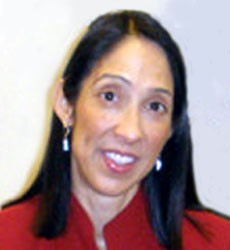
According to the same cable, the US embassy attempted to confirm the information provided by Hamade, through a variety of sources, including the embassy staff as well as workers at NGOs in southern Lebanon, and members of the Telecoms ministry. The sources confirmed Hamade’s information as some added some economical dimensions, like Gilbert Najjar, Chairman of the Owner Supervisory Board, did. The cable quoted Najjar as saying that the Telecoms Ministry suspected illicit activity about a year ago, due to both a decrease in the number of new subscribers to the government's fixed line provider Ogero in certain parts of the south, and signal interference in the south. However, the July war and the discovery of signal interference coming from the west (which continues to this date), subsequently threw the investigation off track.
SANIORA NOT REACTING TO HAMADE’S REPORT Afterwards, Hezbollah Telecoms network disappeared from the leaked cables of the US embassy in Beirut. It returned in a cable, dated April 8, 2008, in which MP Walid Jumblatt wondered why then PM Fouad Saniora was not reacting to Telecom Minister Hamade's recent report on Hezbollah’s fiber optic network in Lebanon.
Afterwards, Hezbollah Telecoms network disappeared from the leaked cables of the US embassy in Beirut. It returned in a cable, dated April 8, 2008, in which MP Walid Jumblatt wondered why then PM Fouad Saniora was not reacting to Telecom Minister Hamade's recent report on Hezbollah’s fiber optic network in Lebanon.
According to the cable, Jumblatt said that Hamade’s report had not yet officially been presented to PM Saniora, because the "security apparatus" was hesitating to make it official. Jumblatt said that LAF G-2 Intelligence Director George Khoury and ISF General Rifi were talking about coordinating the report with Hezbollah security chief Wafiq Safa, who reportedly warned that any action taken against the network would be considered an "act of war." Jumblatt provided then US ambassador Michele Sisson with a copy of the map indicating the location of the network.
Jumblatt expressed perplexity at Saniora's failure to push on the report. Defense Minister Elias Murr reportedly was blaming Khoury for the delay.
HEZBOLLAH VERY OPEN
In another cable, dated April 11, 2008, then US ambassador Michel Sisson quoted Egyptian ambassador Ahmed al-Bedawi as saying that Hezbollah is very open about all of its operations, including its new fiber optic telecom network. The Egyptian ambassador relayed that one Hezbollah official did not downplay recent public reports on Hezbollah building a fiber optic telecom network, and asked Bedawi, "How do you think we ran a resistance in 2006?" Bedawi told the Ambassador that PM Fouad Saniora showed him a map denoting the network in Lebanon.
IRAN TELECOM TAKING OVER LEBANON Another cable, dated April 16, 2008, raised the issue. The cable spoke of a meeting between Telecommunications Minister Marwan Hamade and then US ambassador Michele Sisson, under the request of Hamade. He started the meeting by claiming that Iran Telecom is taking over the country. He was referring to the discovery of acomplete fiber optic system (FiOS) installed by Hezbollah throughout Lebanon, the cable read.
Another cable, dated April 16, 2008, raised the issue. The cable spoke of a meeting between Telecommunications Minister Marwan Hamade and then US ambassador Michele Sisson, under the request of Hamade. He started the meeting by claiming that Iran Telecom is taking over the country. He was referring to the discovery of acomplete fiber optic system (FiOS) installed by Hezbollah throughout Lebanon, the cable read.
Hamade told Sisson that he has been sharing the network’s news with “friends” throughout the world, including the Arab countries, US, France and UN’s Terje Roed-Larsen. Hamade said there were only two choices for the government of Lebanon: approach the UN Security Council, or use the "cover" of March 14-friendly municipalities to cut the lines. However, he questioned whether the Lebanese Armed Forces (LAF) and the Internal Security Forces (ISF) have the "guts" to do so, given that Hezbollah already stated to Lebanese security officials that it would view this as equal to an Israeli act of aggression, and would then take action against the government. Hamade expressed hope that Saad Hariri, now in Geneva, will return soon to Lebanon so that March 14 can meet to formulate a strategy.
UNSC CANNOT REMAIN NEUTRAL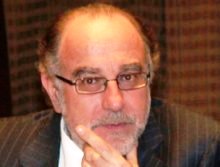 On May 1, 2008, Hezbollah Telecoms network appeared again in a US leaked cable. Then PM Fouad Saniora’s senior advisor Mohammed Chatah told then US ambassador that the network was yet another example of Hezbollah’s many infringements against the state. The network could thus not be separated from Hezbollah’s military activities.
On May 1, 2008, Hezbollah Telecoms network appeared again in a US leaked cable. Then PM Fouad Saniora’s senior advisor Mohammed Chatah told then US ambassador that the network was yet another example of Hezbollah’s many infringements against the state. The network could thus not be separated from Hezbollah’s military activities.
According to Chatah, the UNSC could not remain neutral to reports of what he called increasing illegitimate Hezbollah activities. However, he admitted that the Lebanese government would have to be the one to initiate the accusation. Chatah also said there was no clear strategy within the government on how to approach the problem, and cited some disagreement between Defense Minister Murr and Telecom Minister Hamadeh.
HEZBOLLAH WILLING TO ESTABLISH OWN STATE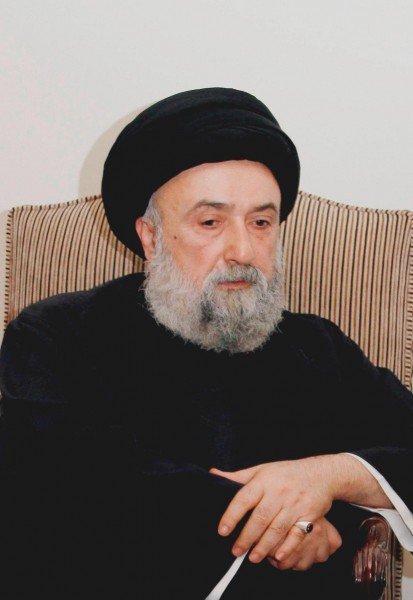 The campaign on Hezbollah Telecoms network was not limited to Lebanese state politicians. In a cable, dated May 4, 2008, Sayyed Ali al-Amin, then mufti of Tyre, raised the issue. After saying that UNIFIL troops were now merely tourists in Lebanon, he reported that he spoke to a Belgian UNIFIL contingent four months ago about the visible fiber optic Hezbollah has been constructing throughout the country. He claimed that the fiber optic network, in addition to the monitoring cameras set up purportedly by Hezbollah at Beirut International Airport, indicate Hezbollah’s willingness to establish its own state. The Lebanese government should apply its laws to the organization, he urged. He relayed that he pressed Prime Minister Fouad Saniora to hold monthly meetings, even at lower levels if preferred, to discuss Hezbollah and Iranian control in Lebanon with independent Shia clergy.
The campaign on Hezbollah Telecoms network was not limited to Lebanese state politicians. In a cable, dated May 4, 2008, Sayyed Ali al-Amin, then mufti of Tyre, raised the issue. After saying that UNIFIL troops were now merely tourists in Lebanon, he reported that he spoke to a Belgian UNIFIL contingent four months ago about the visible fiber optic Hezbollah has been constructing throughout the country. He claimed that the fiber optic network, in addition to the monitoring cameras set up purportedly by Hezbollah at Beirut International Airport, indicate Hezbollah’s willingness to establish its own state. The Lebanese government should apply its laws to the organization, he urged. He relayed that he pressed Prime Minister Fouad Saniora to hold monthly meetings, even at lower levels if preferred, to discuss Hezbollah and Iranian control in Lebanon with independent Shia clergy.
CABINET NOT WILLING TO CUT THE LINES The next day, the cabinet took the famous decisions against the network following a ten-hour marathon meeting. According to a cabled, dated May 6, 2008, then Information Minister Tareq Mitri briefed then US ambassador on the cabinet session. Mitri said the Cabinet is not willing to go as far as to request the Lebanese Armed Forces (LAF) to "cut the lines" because it would be considered an act of war by Hezbollah.
The next day, the cabinet took the famous decisions against the network following a ten-hour marathon meeting. According to a cabled, dated May 6, 2008, then Information Minister Tareq Mitri briefed then US ambassador on the cabinet session. Mitri said the Cabinet is not willing to go as far as to request the Lebanese Armed Forces (LAF) to "cut the lines" because it would be considered an act of war by Hezbollah.
As for the decision to remove Brigadier General Wafiq Shuqayr as the head of airport security and relocate him back to the LAF, Mitri blamed Shuqayr for negligence rather than maliciousness. Mitri said the decision was challenging because the Cabinet was concerned about potential consequences to its actions, noting that Shuqayr could file and even win a lawsuit if he can prove that he was held accountable without an official investigation. The Cabinet was also worried about how to respond if the general reported to work the next day in defiance of its decision.
Before the end of his meeting with Sisson, Mitri expected that LAF Commander Michel Sleiman will be challenged by violent strikes.
MURR HAS ASSURED CABINET
The country witnessed what was worse than Mitri’s expections. Yet, in a cable dated May 15, 2008, MP Saad Hariri’s advisor Nader Hariri revealed that Defense Minister Elias Murr had assured the cabinet that the LAF would defend the government's decision, and that in any case Hezbollah would have found another excuse to start trouble. He was answering a question about why the government had taken what it knew would be controversial decisions on the eve of a major labor demonstration, making it easy for Hezbollah to turn the demonstrations into a political protest.
